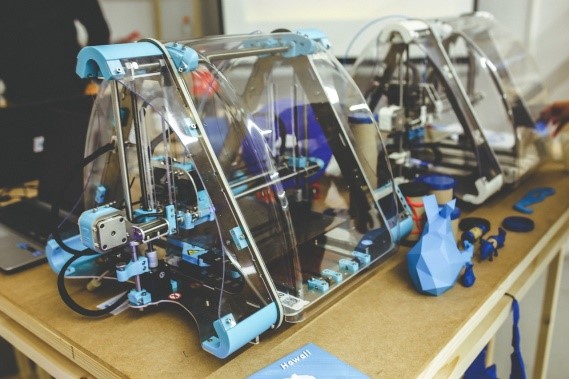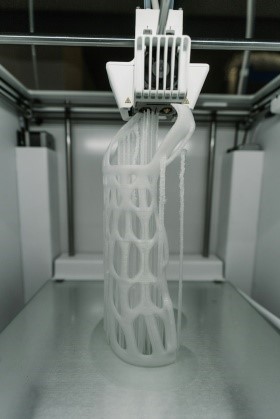The way manufacturers design and create their products has gone through major changes through the years. As more technological innovations are introduced, industries are keeping an open mind and are curious as to how to use these new tools and equipment to improve their processes. They know that sticking to the old routine may impede their growth and progress so they are willing to change with the times.
One particular advancement worth mentioning is 3D printing
Since its introduction, 3D printing has shown how valuable it is in prototyping and production. From clothing and electronics to medical equipment and construction and engineering, it has sprung up as a game-changer in bringing high-quality products to people faster.

To learn more about 3D printing, its history, how it works, its applications, and its role in prototyping and production are discussed below.
A Brief History of 3D Printing
1980s
The first 3D printing activity is believed to have happened in Japan back in the early 1980s. A man named Hideo Kodama was looking for a way to create a rapid prototyping system. That was when he developed a manufacturing approach that used UV-light-polymerized photosensitive resin (https://art-tangent.com/product/cheap-pla-3d-printing-service-for-rapid-prototyping/).
In a different part of the world, years later, a group of French researchers had the same dilemma. However, the solution they found was different. They came up with a system that used laser to cure liquid monomers into solid forms.
Later on, an American furniture builder named Charles Hull developed and patented a system for making 3D models by curing photosensitive resin layer by layer. He went on to establish the 3D Systems Corporation in 1988.
That same year, another American, Carl Decard, explored and patented the Selective Laser Sintering (SLS) technology (https://art-tangent.com/product/3d-polyjet-dmls-dls-fdm-sla-mjf-sls-rapid-printing-prototyping-service/). This particular system used laser, instead of liquid, to fuse powders.
1990s to 2010s
During this period, there was an increase in the number of companies that experimented with 3D printing and rapid prototyping technologies.
The first commercially available SLS printer was released in 2006. CAD became more accessible. As a result, manufacturers of industrial parts were able to enhance their processes and people were able to perform 3D printing, rapid prototyping, and other related tasks on their computers.
Today
The cost of 3D printers started to decline in recent years. This led to the general public affording to do 3d printing and rapid prototyping tasks with ease and at a lower cost.
Also, the newer 3D printers have evolved. They can now work with more variety of filaments and plastics. They have made 3D printing carbon fiber, glass fiber, and others possible. There are also efforts to test the feasibility of using food, such as pasta and chocolate, to 3D print.
With more and more ideas formed and innovations created each day, it is safe to say that the history of 3D printing will continue for a long time.
Steps in 3D Printing
3D printing is the process of creating three-dimensional (3D) objects using Computer-Aided Design (CAD) or digital 3D models. It typically consists of multiple processes in which materials, such as liquids, powder grains, and plastics, are added layer by layer.
Step 1: Create a model in CAD. You can obtain a ready-made 3D model, make one from scratch, or scan a physical object (https://art-tangent.com/product/high-precision-3d-printing-service-abs-plastic-rapid-prototype-sla-sls-service/) using a 3D scanner.
Step 2: Generate an STL or 3MF file. Once the modeling process is completed, CAD provides an STL or 3MF file. An STL file contains the surface geometry of your 3D object, while the 3MF file also includes information on the materials, color, texture, and mesh of the object.
Step 3: Slice in slicing software. That way, you can obtain your STL file’s G-code. With a G-code, your printer can access the geometry data and know the steps to print the model.
Step 4: Begin 3D printing. This involves loading the materials, sending your file to print, and starting the printing process.

Step 5: Perform post-processing. In a lot of cases, post-processing 3D prints is not necessary. However, if you want to smooth, polish, or paint them, conducting post-processing methods, such as UV light curing or vapor smoothing, is the final step.
The Role of 3D Printing in Prototyping and Production
Compared to the traditional methods of manufacturing products, 3D printing offers more and greater capabilities. Nowadays, it is used in several applications.
Thanks to 3D printing, rapid prototyping of automotive parts and components is made possible. It uses a quick and efficient approach to design and create both interior and exterior vehicle parts. From custom seats to spare parts, it guarantees improved quality and reduced costs.

In the medical field, it helps in constructing specialized products for healthcare practitioners and patients. Through 3D printing, rapid prototyping of tooth implants, knee replacements, heart valves, prosthetics, and other medical equipment and devices can be done.
The fashion industry has also found 3D printing valuable in making clothing. They can fabricate apparel that meets the specific tastes and measurements of their customers. As a result, there is reduced waste and costs.
Other important applications of 3D printing are in the education field, where it is used to produce biological replicas, topographical maps, and other learning supplies; and the aerospace industry, where it is essential in producing highly complex aircraft and rocket parts.
Conclusion
3D printing has done so much for the manufacturing industry for several decades now. It has revolutionized the way the prototyping and production processes are carried out. From cars and medical supplies to clothes and aircraft parts, its contributions are unparalleled. It is an innovation that has had a major hand in reshaping the way industries design and develop their products. As it continues to evolve, it shows even greater potential in making processes more cost-effective to keep coming up with products that are of high quality and meet customer expectations.
External links:
https://en.wikipedia.org/wiki/3D_printing
https://professional.mit.edu/news/articles/moving-3d-printing-prototyping-production





